第114章 Chapter 33(4)
The people who go into ecstacies over St. Sophia must surely get them out of the guide-book (where every church is spoken of as being "considered by good judges to be the most marvelous structure, in many respects, that the world has ever seen.") Or else they are those old connoisseurs from the wilds of New Jersey who laboriously learn the difference between a fresco and a fire-plug and from that day forward feel privileged to void their critical bathos on painting, sculpture and architecture forever more.
We visited the Dancing Dervishes. There were twenty-one of them. They wore a long, light-colored loose robe that hung to their heels. Each in his turn went up to the priest (they were all within a large circular railing)and bowed profoundly and then went spinning away deliriously and took his appointed place in the circle, and continued to spin. When all had spun themselves to their places, they were about five or six feet apart -- and so situated, the entire circle of spinning pagans spun itself three separate times around the room. It took twenty-five minutes to do it. They spun on the left foot, and kept themselves going by passing the right rapidly before it and digging it against the waxed floor. Some of them made incredible " time." Most of them spun around forty times in a minute, and one artist averaged about sixty-one times a minute, and kept it up during the whole twenty-five. His robe filled with air and stood out all around him like a balloon.
They made no noise of any kind, and most of them tilted their heads back and closed their eyes, entranced with a sort of devotional ecstacy.
There was a rude kind of music, part of the time, but the musicians were not visible. None but spinners were allowed within the circle. A man had to either spin or stay outside. It was about as barbarous an exhibition as we have witnessed yet. Then sick persons came and lay down, and beside them women laid their sick children (one a babe at the breast,) and the patriarch of the Dervishes walked upon their bodies. He was supposed to cure their diseases by trampling upon their breasts or backs or standing on the back of their necks. This is well enough for a people who think all their affairs are made or marred by viewless spirits of the air --by giants, gnomes, and genii -- and who still believe, to this day, all the wild tales in the Arabian Nights. Even so an intelligent missionary tells me.
We visited the Thousand and One Columns. I do not know what it was originally intended for, but they said it was built for a reservoir. It is situated in the centre of Constantinople. You go down a flight of stone steps in the middle of a barren place, and there you are. You are forty feet under ground, and in the midst of a perfect wilderness of tall, slender, granite columns, of Byzantine architecture. Stand where you would, or change your position as often as you pleased, you were always a centre from which radiated a dozen long archways and colonnades that lost themselves in distance and the sombre twilight of the place. This old dried-up reservoir is occupied by a few ghostly silk-spinners now, and one of them showed me a cross cut high up in one of the pillars. I suppose he meant me to understand that the institution was there before the Turkish occupation, and I thought he made a remark to that effect; but he must have had an impediment in his speech, for I did not understand him.
We took off our shoes and went into the marble mausoleum of the Sultan Mahmoud, the neatest piece of architecture, inside, that I have seen lately.
Mahmoud's tomb was covered with a black velvet pall, which was elaborately embroidered with silver; it stood within a fancy silver railing; at the sides and corners were silver candlesticks that would weigh more than a hundred pounds, and they supported candles as large as a man's leg; on the top of the sarcophagus was a fez, with a handsome diamond ornament upon it, which an attendant said cost a hundred thousand pounds, and lied like a Turk when he said it. Mahmoud's whole family were comfortably planted around him.
We went to the great Bazaar in Stamboul, of course, and I shall not describe it further than to say it is a monstrous hive of little shops -- thousands, I should say -- all under one roof, and cut up into innumerable little blocks by narrow streets which are arched overhead. One street is devoted to a particular kind of merchandise, another to another, and so on. When you wish to buy a pair of shoes you have the swing of the whole street -- you do not have to walk yourself down hunting stores in different localities. It is the same with silks, antiquities, shawls, etc. The place is crowded with people all the time, and as the gay-colored Eastern fabrics are lavishly displayed before every shop, the great Bazaar of Stamboul is one of the sights that are worth seeing. It is full of life, and stir, and business, dirt, beggars, asses, yelling peddlers, porters, dervishes, high-born Turkish female shoppers, Greeks, and weird-looking and weirdly dressed Mohammedans from the mountains and the far provinces -- and the only solitary thing one does not smell when he is in the Great Bazaar, is something which smells good.